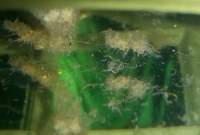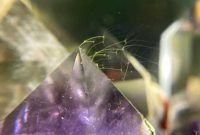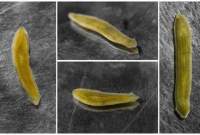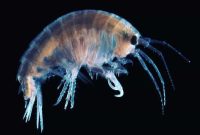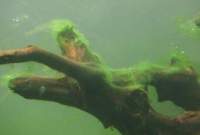Sadly, most of the planted tank owners have to deal with aquarium algae sooner or later.
They can make us feel so frustrated when some of them arise, and you do not have any experience or knowledge to save your tank populations.
The green hair/fuzz algae group is the often type that seen appears inside aquarist tanks. Some may look identical in appearance but actually registered as different species.
Green fuzz (Oedogonium) algae and the true “fuzz algae” are two filamentous algae types under the same group with similar appearance but absolutely distinctive.
Previously we have discussed the characteristics and how to fight the fuzz algae. In this extensive guide, we will tell you all beneficial information about Oedogonium algae starting from the general knowledge until how to treat them.
TABLE OF CONTENTS
What Is Oedogonium Algae?
They are part of freshwater green filamentous or hair algae group (family Oedogoniaceae), which W. Hilse first discovered in 1860 at the fresh waters of Poland, then named by the German scientist K.E. Hirn.
Oedogonium algae look a little bit short fuzzy or fluffy appearance forming resemble a thick forest of green hair where attached almost to all surfaces of objects in the aquarium, including plants and substrate. The mature ones could live as a free-floating mass.
These algae prefer to stick on weak or dying plants exposed to the light. They can appear in new or old tanks. In some cases, they also arise after massive trimming.
Green fuzz or green fur algae is other common names. It is remembering us to the actual “fuzz algae.” At first glance, it isn’t easy to distinguish between them. When they grow mature, the difference can be seen.
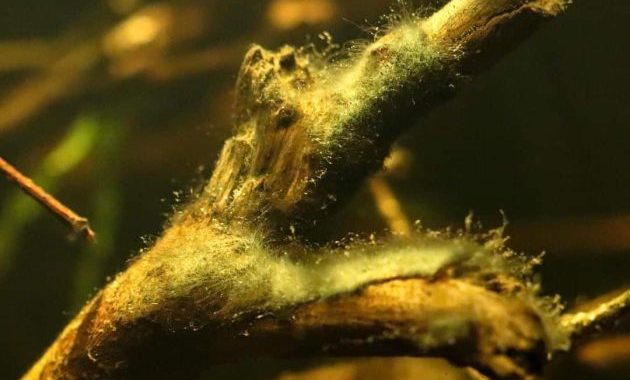
The Oedogonium colors usually range from dark green until yellow-green. Their growth rate is fast and tends to prefer the slow-flowing water movement. When you try touching them, they do not sense slimy.
Their filaments usually are unbranched and only one cell thick. Green fuzz algae have holdfast cells that act like roots, enabling them to attach more firmly to the objects. They can reproduce themselves by sexual, asexual, and vegetative methods.
The green fur algae commonly inhabit stagnant water environments such as roadside ditches, lakes, pools, small ponds, reservoirs, and marshes in their natural habitat.
Some areas with significant pH levels (7.3-9.6) are perfect for growing. These algae also can tolerate a wide range of nutrient types and amounts in the water.
Read Also: Advice To Dealing With Cladophora Algae In The Aquarium
Is The Oedogonium Algae Bad For Plants?
The answer is Yes.
Based on their growth habit, they may be suffering the poor plants hasten to die. Absorbing all nutrients and blocking the light interferes with the leaves plants’ photosynthesize.
If you leave them to grow, they could generate their cells quickly, making the Oedogonium populations bloom out of control. It makes the plants unable to survive, forcing you to rebuild the aquarium as the best solution.
However, some aquarists said, “if having a small number of algae is normal since you can control them.” So, do you want to see them live in your prized tank?
Read Also: How To Kill Staghorn Algae
Is The Oedogonium Algae Danger For Fish?
Oedogonium algae probably can harm your aquarium fish, but not directly.
When these algae invade your tank, many plants will be withered slowly and die. During these conditions, the dissolved Carbon dioxide amounts in the water will reduce significantly and build up the organic wastes in the substrate.
It may block the filter to recycle water, stopping it from flowing the fresh water to the entire tank. This condition is very unhealthy condition and hurts your fish.
Read Also: Is Red Spot Algae Dangerous?
Common Causes Of Oedogonium Algae
Understanding the leading causes is the foundation to enhance the success level to win from the Oedogonium algae in the planted aquarium.
Below are two primary points that cause the algae to develop in the fish tank:

Unstable CO2 Contents
The fluctuating or lower carbon dioxide level is the universal reason that many aquarists accept as one of the problems causing many types of algae, including this green fur algae.
They prefer this condition to start reproduction, and if you let this situation for a while, they may spread over the tank.
Imbalance Macronutrients
The appearance of hair algae types is commonly associated with an imbalance macronutrients concentration.
Lower or higher phosphates (PO4) and nitrates (NO3) levels are the main substances causing the Oedogonium algae to grow.
The age of the fish tank does not matter; they can appear in newer setups or mature ones. In other cases, poor water quality and excessive trimming can also make them grow faster, although it is not the main cause but should be concerned.
Read Also: How To Stop Green Dust Algae Grow In The Aquarium
How To Prevent The Oedogonium Algae Striking Your Aquarium
Performing some tricks below will help keep your tropical tank always in optimal condition and decrease the chance of green fuzz algae being established.
This probably sounds mainstream, like other steps that aquarists usually use to avoid almost freshwater algae types. But this is very important, so do not be underestimated it. It works effectively to refuse the presence of the Oedogonium algae in your fish aquarium. Let’s see it:
Add Some Species That Eating Algae
This tip hears so simple; it is the first step that is necessary to do for guarding your plants.
The algae eater species tend to spend their time around the alga clumps in the wild. It helps them to reach and feed on the algae easiest.
When you keep them in the aquarium, these species also act like that. Biting little by little constantly, making the algae population can be handled.
Unfortunately, only the younger algae will be more consumed by them than adults and bigger ones. Do not be disappointed; it is just the first step, as we said before.
Most freshwater shrimps species are poorly eaten Oedogonium algae, except Amano shrimp. Instead, some algivore fish species such as Siamese algae eaters, rosy barbs, otocinclus catfish, and mollies. If you prefer other species, you can use nerite snails as the option. Use which ones that appropriate for your setup.
Maintenance And Water Change
Maintaining is the key to creating a great and healthy tank, and it will be broken without that. There are several things which you should perform in this chapter, including:
Cutting off the dense clumps and taller plants helps the vegetation section under the parts to receive the light for photosynthesizing and having some spaces to spread. It will make any plants in your tank grow best.
Cleaning inorganic and organic wastes helps to keep the water quality stable. You can use a gravel cleaner to pick up any debris on the substrate. It will remove any bacteria, algae, and fungus bases that harm your plants.
Wiping up the wall glass is another step which you can do. You can use an aquarium glass cleaner to get rid of the sticky stains, making the view of the tank look more clear.
Give regular fertilizer to gain and stabling the dissolved substances in the water. It will be critical if you provide insufficient doses, your plants might not grow well, but if you are given more excessive, it probably leads to more severe problems. Make sure to supply the correct amounts.
Next, a weekly water change routine of around 30% can help keep your tank stay in the best performance. Utilization of distilled water is more recommended than tap water, without containing iron, manganese, or other destructive substances that influence water quality.
Producing your own RO water can save much money; purchasing the RO water kit for home aquaria is the step that you can do. Luckily, this equipment is available in most big online marketplaces.
Read Also: 5 Effective Ways To Get Rid Of Ramshorn Snails In The Aquarium
Always Monitor Your Tank
Ensure to test frequently water quality and parameters. This step is helpful to find out the substance’s rate in the water.
The nutrients test kit set and CO2 checker are available in trades; its prices are competitive and come with many variations; choose one that fixes your tank.
A standard healthy tank commonly has a value formulation like this:
- pH Level: 7-7.5
- Carbon Dioxide: 20-30 mg/l
- Phosphate: 0.1-1 mg/l
- Potassium: 5-10 mg/l
- Magnesium: >10 mg/l
- Nitrate: 10-25 mg/l
Never overfeeding your fish, the accumulation of leftovers can invite various issues. Provide enough lighting duration, generally 7-8 hours.
Water should be running to all areas in the aquarium; if there is some dead spot, change the filter to the larger ones or add a powerhead or wavemaker. We suggested using a canister filter; it helps to bind the carbon dioxide released into the air.
How To Get Rid Of The Oedogonium Algae From Your Aquarium
When you return to your home, then discover some Oedogonium algae attaching to your precious plants; it’s might change your mood at once. In the last chapter, we will happily share how to remove them in several ways. So, let’s see it below:
Wiping Up Oedogonium Algae Manually
The first step to fight almost any algae type is by eradicating them. This way is worth it for a low-level algae outbreak.
A tiny population of Oedogonium algae that stick on the object could clean off by scratching them with an algae scraper. While the free-floating form is pretty easy, you can use a fish net to pick them up from the water surface. Adding more algae eaters species can help to consume the remains.
Although it’s not working perfectly to med-high level algae plague, at least it can cut down the numbers. So, you need to move to other steps if the simple tips above do not eliminate them.
Next, reduce the water by 30% – 75% depending on its level. Pick up any equipment and decorations such as filter pipe, stones, driftwood. Brush and soak it into the algae removal or hydrogen peroxide mixture for a while. Make sure to wash it to be precise.
After that, fill up the tank with water again. Distilled water is recommended. Then boost the carbon dioxide and fertilizer rate than usual. Give 6-7 lighting duration and stay to be patient to wait for the result.
If that method still does not offer a significant effect, you can perform a blackout for three days. Use the thick blanket, and do not overfeed your fish during the session.
Read Also: Freshwater Amazon Pufferfish Caresheet
Liquid Carbon Treatment
You are definitely known or have ever heard about this product. It’s evident effectively against most freshwater aquarium algae species.
Liquid carbon is easy to find in the trades and has affordable prices. Applying this product is simple, take a syringe and fill up some doses (5-7ml) of it. After that, inject it directly into the algae.
Perform this treatment once a day for a week or more until the algae are dead. Liquid carbon is very safe for most aquarium populations; it will help the aquatic plants grow optimally and healthily.
“Seachem Flourish Excel” is a brand product that is commonly used by many aquarists; we also use that product to enhance the plants’ health level and against the algae.
Treatment With Medicines
There are two types of cures that can kill Oedogoniumm and other algae inside the aquarium. First is algae removal liquid safe for other populations such as fish and plants. This product is very recommended to use and sell with many brands and varies in price.
An example is API Algaefix; this product is powerful to kill hair algae groups and safe for use in home aquaria, do not forget to read the instructions before using it. It’s available on Amazon and other sites, so wanna try this product?
The second is H2O2 (Hydrogen Peroxide) liquid. This product can also you buy on Amazon, but we really do not suggest removing the algae. Instead of killing the algae, it also could kill your plants too.
3% hydrogen peroxide absolutely can annihilate the Oedogonium algae in a moment, but if you give an incorrect dose, it probably smashes the aquarium plants.
Most freshwater tank keepers do not advise using this product, especially for beginners. It’s only fit for an expert, so choose other methods above which are fixed with your capability.


